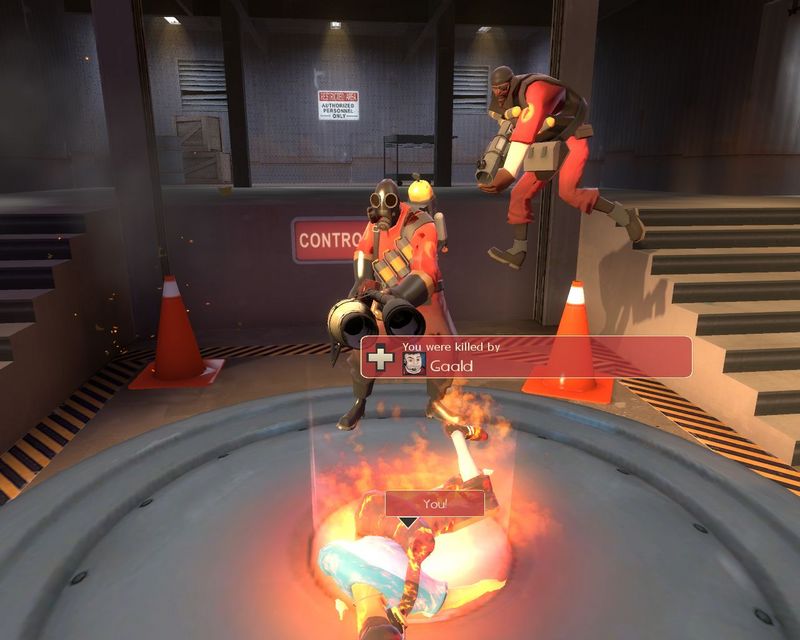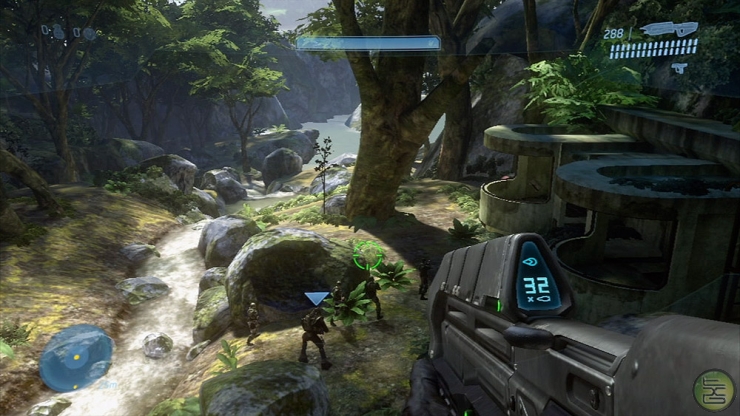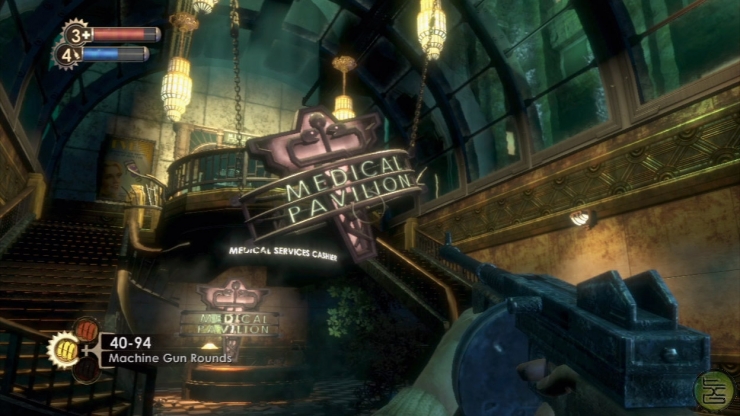I’ve been too busy playing a ton of great games to write about them. Two particular games, however, stand out.
The first game is BioShock. The “spiritual successor” to System Shock 2, from the same creative core (Ken Levine and Jon Chey), BioShock is easily the most compelling single-player experience in years. Set in an underwater city called Rapture, the player navigates a series of stunning set pieces. The halls of Rapture house the art deco remains of a failed Objectivist society, and much like System Shock 2, audio logs left behind by the people that were there slowly unfold the backstory of Rapture’s rise and fall.
Gameplay is similar to System Shock’s take on first person shooting, with an array of abilities available to augment the player’s character. Everything from hacking to attack abilities to various other means of manipulating the environment and the people in it, there’s a lot to choose from. BioShock is a bit more action-heavy than the System Shock games, and while I think System Shock 2 is still a superior title, BioShock is my likely vote for Game of the Year, and would probably be my vote in many other years.
 It’s been a long wait for a new “Shock” game (8 years!), but it’s been an even longer wait for the next Team Fortress game. Team Fortress originally released in 1997, and since then, we’ve only had an inferior remake to tide us over. Team Fortress 2 doesn’t officially release until the Half-Life 2 Orange Box comes out on October 9th, but those who preorder the PC version through the Steam digital distribution service get to play a “beta” version of TF2 right now (a very near-final product that’s getting minor tweaks leading up to the product launch).
It’s been a long wait for a new “Shock” game (8 years!), but it’s been an even longer wait for the next Team Fortress game. Team Fortress originally released in 1997, and since then, we’ve only had an inferior remake to tide us over. Team Fortress 2 doesn’t officially release until the Half-Life 2 Orange Box comes out on October 9th, but those who preorder the PC version through the Steam digital distribution service get to play a “beta” version of TF2 right now (a very near-final product that’s getting minor tweaks leading up to the product launch).
Unlike most online shooters, TF2 opts for a very cartoonish, Spy vs. Spy-like visual style. I was worried about this when I first saw screenshots, but in action, it’s absolutely brilliant. The game brings a humorous slant to the machismo world of online shooters (actual humor, not Crash Bandicoot-style goofiness that is completely un-funny), without sacrificing the competitive thrill of blasting your friends to bits. More importantly, the visuals are very effective at conveying information to the player - each different player “class” is easy to differentiate visually, which is important in this kind of game. There’s an absolute ton that I could talk about, but the most important bullet points are that the game is deep yet accessible to new players, runs well on midrange PCs, and will be the highlight of this fall’s online gaming to people outside the Halo junkie teenagers.
 Speaking of Halo, the release of Halo 3 has been unavoidable - the media barrage has been unprecedented in games (and most other forms of entertainment too). 7-11 didn’t just sell the game, they took preorders. Halo is the go-to game for rowdy teenagers the world over. Its single player will be heralded over the more deserving BioShock, and its multiplayer will be heralded over the more deserving Team Fortress 2 (and some other fall releases). That said, Halo 3 has more than enough going for it to be worth playing despite the excessive hype. Finally, the ability to play the campaign in co-op mode now extends to Xbox Live and not just local networks, and supports 4 players. The superb multiplayer matchmaking returns, and the ability to create new game mode variants has been extended drastically with the addition of Forge, a veritable playground of Halo 3 multiplayer game editing. Stats are tracked to the extreme, and even videos of the games you’ve played are saved and viewable (and sharable) automatically. The core Halo gameplay is intact, and the features surrounding that gameplay are typical Bungie bar-raising affairs.
Speaking of Halo, the release of Halo 3 has been unavoidable - the media barrage has been unprecedented in games (and most other forms of entertainment too). 7-11 didn’t just sell the game, they took preorders. Halo is the go-to game for rowdy teenagers the world over. Its single player will be heralded over the more deserving BioShock, and its multiplayer will be heralded over the more deserving Team Fortress 2 (and some other fall releases). That said, Halo 3 has more than enough going for it to be worth playing despite the excessive hype. Finally, the ability to play the campaign in co-op mode now extends to Xbox Live and not just local networks, and supports 4 players. The superb multiplayer matchmaking returns, and the ability to create new game mode variants has been extended drastically with the addition of Forge, a veritable playground of Halo 3 multiplayer game editing. Stats are tracked to the extreme, and even videos of the games you’ve played are saved and viewable (and sharable) automatically. The core Halo gameplay is intact, and the features surrounding that gameplay are typical Bungie bar-raising affairs.
Everyone needs to play BioShock and Team Fortress 2, and everyone already will be playing Halo 3.
